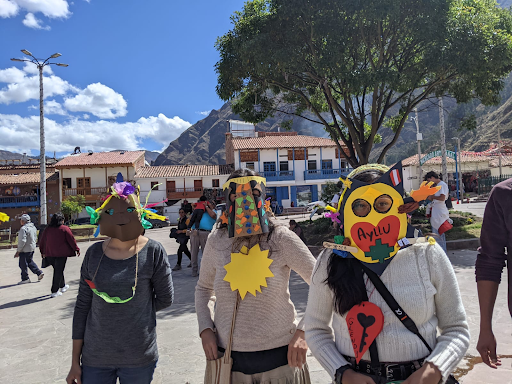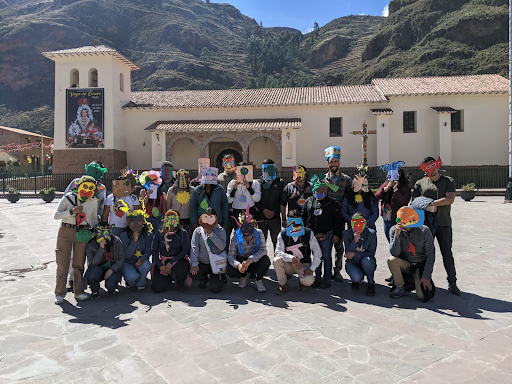Fresh from the Field: Launching a New Cohort of Creative Environmental Leaders in Pisac, Perú
- Creative Action Institute
- Aug 14, 2024
- 4 min read
Latin America is not just biodiverse—it is megadiverse. According to the National Resources Defense Council, the region houses around 60% of global terrestrial and marine life.
Its individual countries have even more surprising superlatives. Perú contains over 26,000 species of flora and fauna. More than 1.5 million Bolivians live near protected areas, and work towards the conservation of their biodiversity. Ecuador contains 26 distinguishable habitat types, each with its own array of plants and animals. Panama sits astride the Mesoamerican Biological Corridor, and facilitates the rich exchange of plant and animal species between North and South America.
This “megadiversity” makes it an important place to focus on building the capacity of leaders working on a variety of critical and interconnected issues, such as forest protection, marine conservation, mining, indigenous rights and cultural conservation, wildlife preservation, gender equity, and youth empowerment.
In light of this challenge, Creative Action Institute collaborated with New England Biolabs Foundation to launch a new cohort of Creative Environmental Leaders, who met in Pisac, Perú. On July 22, 2024, 26 staff and community leaders from 20 environmental organizations representing Peru, Bolivia, Ecuador, and Panama gathered for the first module of our Creative Environmental Leadership Program.
Throughout the intensive three-day training, Creative Action Institute facilitators Isabel Carrió and Luis Quino guided the leaders to creatively discover their strengths, purpose, and passion for their work. The workshops are designed to strengthen leaders’ creative thinking, problem-solving, and collaboration, which are essential ingredients for leadership, and to identify ways of using arts-based strategies to amplify their mission and engage communities.
One important initial activity is the creation of Purpose Masks. The Purpose Mask is a way for participants to share the guiding values of their personal and work lives. It also allows participants, who come from many different places and are meeting for the first time, to understand each other’s perspectives.
Another key part of the workshop is when participants work in teams to create and present their Art Codes, which are creative and symbolic representations of issues relevant to their work. The activity was followed by a dialogue to help each other understand the problem, analyze their causes, and generate possibilities for action. Participants developed theater skits on the following topics:
The transition from agricultural to commercial land: Agriculturally productive areas are being taken over by hotels, tourist centers and other attractions. Perú’s Sacred Valley, which at one time formed the heart of the Inca Empire, is now becoming an urban and commercial area.
Pollution of water sources: By 2030, 58% of the Peruvian population will live in areas with water scarcity due to the looming global water crisis. Peru is projected to be one of the most affected countries in Latin America.
Illicit wildlife trafficking: Their capture, poaching, possession, acquisition, and smuggling are the greatest threats to the conservation of the planet's biological diversity.
Deforestation in indigenous territories: Illegal logger mafias have caused massive deforestation in the Peruvian Amazon. Due to this activity, 17,500 hectares of primary forest were lost alone in the San Martín region, which is home to the Kechwa indigenous communities.
The loss of native/indigenous languages: Despite having a sizable indigenous population, Perú is rapidly losing its indigenous cultural heritage. According to UNESCO, 21 of Perú’s 48 indigenous languages are at risk of extinction.
Following the Art Codes activity, Stefany Rosselyn Zumaeta Ramos from the Yunkawasi organization shared her thoughts:
“This is out of the ordinary. It is a course that makes you leave your comfort zone, and although you often believe that you do not have artistic skills, the moderators have the necessary tools not to impede the development of the activities. Likewise, you learn a lot about tools and strategies that can be used in the development of workshops with allies.”
Melisa Ramos, who is from the Desarrollo Ambiental y Social organization, also shared her thoughts:
"The course helped me reconnect with principles that are very important to continue my work coherently. Being close to leaders from other projects makes me feel inspired and see problems from different perspectives.This course can accelerate your understanding of various concepts and help you reformulate and question things you may be assuming. Intergenerational and cultural exchange is very enriching, and it is essential to have those perspectives and success stories that encourage us to continue in our work and learn from challenges and new ways of solving problems.”
Participants also explored and strengthened their leadership styles. They analyzed various topics that are challenging in their communities through the Problem Tree, Solution Tree activity. Among the topics:
Conformity of the native community of Santa Fe, Loreto
Inadequate community management of natural resources
Contamination of solid waste from the Armila community of Panama
The lack of appreciation of cultural identity

We will be coaching these inspiring leaders to support them in applying the tools they learned until they reconvene for the next module in the Certificate Program. We look forward to sharing how these leaders use creative tools in their communities!

Many thanks to our participating organizations:
Kusi Kawsay, Alianza Andina para el Desarrollo Sostenible, Minga Perú, One Planet, Colectivo Ecológico Amazonia Regenerativa (CEARE), Asociación Ecosistemas Andinos (ECOAN), Asociación para la conservación de la Chorrera Blanca, Yunkawasi, CREES Foundation for Manu, Amazonian Conservation (ACCA), Grupo RANA, FAENA, GEOYACHAQ, Realidades, ECACHAYUNAIN, Programa de Aves Urbanas Tena, Desarrollo Ambiental y Social, The Leatherback Project, Uma Rumi, Asociación Para La Conservación Oso Dorado Hierba Buena Allpayacu, Asociación Oso Dorado.








Comments